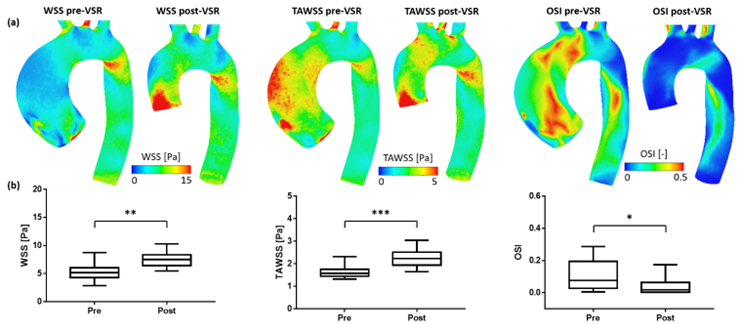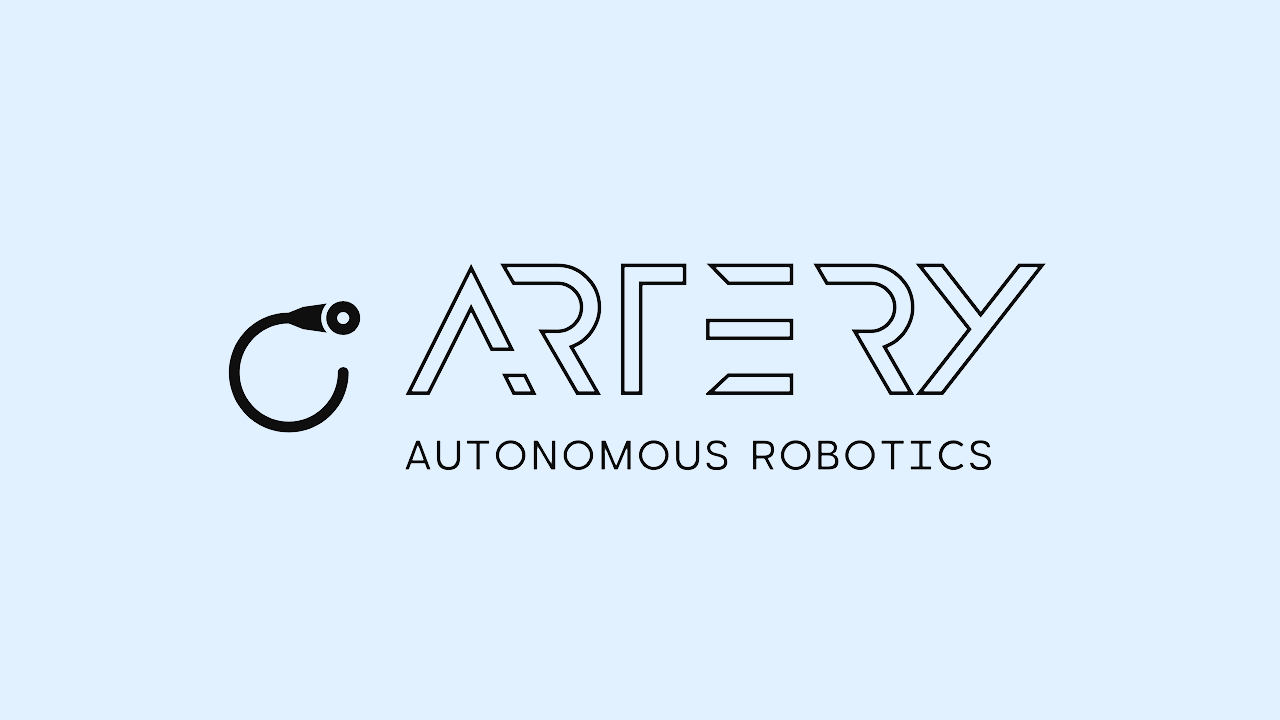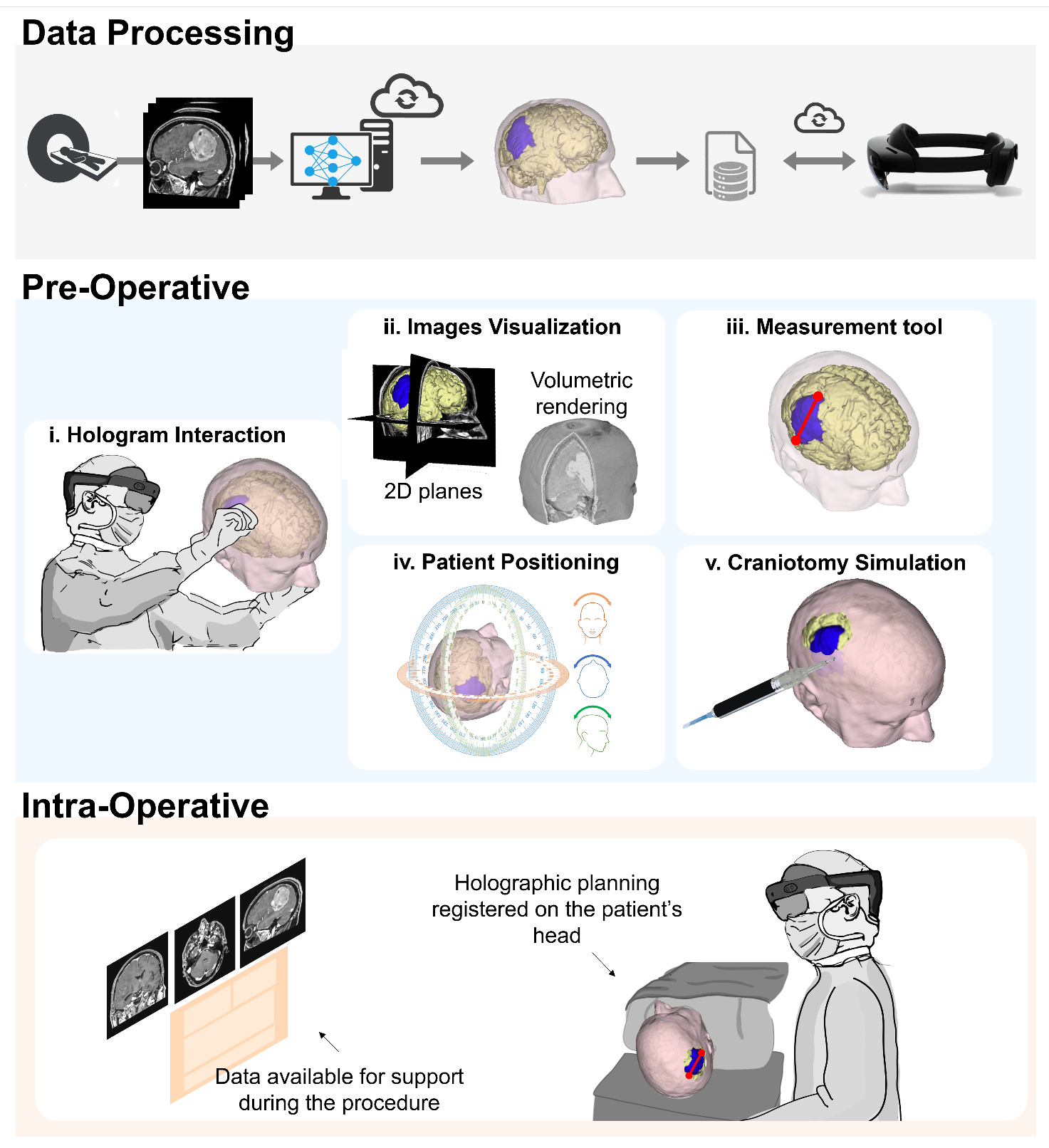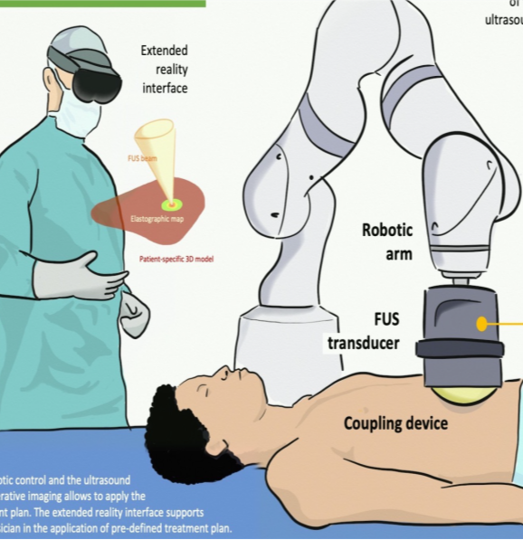
The Research Projects
Biomechanical effects of ascending aorta grafting

Funded by: NIH
Funding period: 2023-2025
Grant number:
Partners:
- Weill Medical College of Cornell University
- Yale School of Engineering & Applied Science
Nearly 750,000 people in the United States have thoracic aortic aneurysms (TAA), including ~150,000 with genetically triggered (“genetic”) syndromic or non-syndromic aortopathies. Prosthetic graft surgery is a cornerstone of TAA therapy to eliminate the risk of aneurysm-related dissection; over 15,000 graft surgeries are performed annually. In genetic TAA patients, nearly a third of dissections occur in the distal (arch, descending) aorta; out of these, over 50% occur after proximal graft surgery, which has been associated with >2-fold increase in risk for distal aorta dissection in Marfan syndrome independent of aortic size. This effect could be due to the grafting-related loss of proximal aortic compliance, which alters the fluid-dynamics distally to the graft thus inducing adverse distal aortic remodeling and adverse clinical prognosis. Hence, adopting grafts for which compliance is tailored to compensate for patient-specific aortic stiffness should attenuate adverse aortic remodeling. These hypotheses will be tested through the analysis of magnetic resonance imaging and multi-scale numerical modeling for a prospectivelly enrolled population of patients.
ARTERY: Autonomous Robotics for Transcatheter dEliveRy sYstems

Funded by: H2020-ICT-2018-20
Funding period: 2021-2024
Grant number: 101017140
Partners:
- Istituto di Biorobotica, Scuola Superiore Sant’Anna
- KU Leuven
- IRCCS San Raffaele Hospital
- SwissVortex
- Artiness
- FBGS
Cardiovascular diseases are the single most common cause of death in Europe and worldwide. Minimally invasive catheter-based approaches are gaining in importance as they extend treatment to patients with high surgical peri-operative risks. Today, catheter-based treatment comes with steep learning curves, poor ergonomics and exposure to damaging radiation.
ARTERY offers a radiation-free approach based on shared-autonomy robotic catheters, with increased user engagement and easy interaction. The fusion of the information yielded by echocardiography, optical and electromagnetic sensing techniques will provide a superior view upon the cardiovascular space. Fluidic actuation paired with artificial intelligence will be the pillars motors of the next generation of robotic catheters that autonomously find their way towards the target site. Through a fully immersive augmented reality interface, the operator will monitor the intravascular route of the catheter with no need for radiation-based imaging. Once into the heart, the operator will be able to navigate the intracardiac domain as if being teleported right inside the patient’s anatomy and will define the catheter target pose by simple gestures into the holographic representation. Artificial intelligence algorithms will automatically translate this input into the set of actions to be performed by the actuators. Variable-autonomy schemes allow the interventionist to take over control at any instant.
ARTERY will showcase this new paradigm on mitral valve repair and left appendage closure, two complex yet critical life-saving interventions. Clinicians and company partners are ready to take over the technology developed in ARTERY and translate it to the clinic right after the project.
In ARTERY, the expertise of our group in computational modeling, mixed reality and AI are merged with the expertise of the Medical Robotics Section of NearLab on surgical robotics and human-robot interaction.
MixEd ReaLIty in Neurosurgery – MERLIN: development of a new neuronavigation platform based on mixed reality

Funded by: MIUR – Italian Ministry of University and Research, PRIN 2022 Call
Funding period: 2023-2025
Grant number: 202225T8S7
Partners:
- Università Cattolica del Sacro Cuore, Roma, Italy
Anatomical understanding and spatial orientation are paramount to the success of neurosurgical procedures and still represent a cognitive challenge for neurosurgeons. Thorough pre-procedural planning is hence required, and the possibility to effectively leverage the planned scenario in the operating room (OR) as intra-procedural support would make procedures safer and faster. The MERLIN project aims to developing an effective and feasible technological solution to support neurosurgeons in the pre-operative planning phase, allowing them for the intuitive navigation of the patient’s anatomy, and intra-operatively, by providing them with a virtual guide co-registered on the patient.
To this aim, the project will integrate four technologies: i) artificial intelligence for the automatic segmentation of pre-operative medical imaging; ii) mixed reality to intuitively navigate the image-based 3D anatomical model, to plan the procedure, and to visualize the planned scenario in the OR; iii) cloud computing to allow for fast reconstruction of the anatomical models and deplyment of the mixed reality app from GDPR-compliant platforms; iv) markerless hologram-to-patient registration algorithms allowing for precision without the need for bulky equipment or for cumbersome registration procedures. Our solution will be developed and tested in vitro on physical phantoms, and its usability will be tested in the OR.
FUTURO: Focused Ultrasound Surgery enabled by Robotics and Simulation

Funded by: MIUR – Italian Ministry of University and Research, PRIN 2022 Call
Funding period: 2023-2025
Grant number: 2022342MEF
Partners:
- Scuola Superiore Sant’Anna, PISA, Italy
Focused Ultrasound (FUS) Surgery is emerging as an early-stage, non-invasive, scarless technology which offers a disruptive, game-changing alternative to surgery, capable of complementing radiation therapy, drug delivery, and immunotherapy. FUS technology allows for delivering large mechanical energy into deep tissues, without any harm for the tissues on the path, enables a plethora of therapeutic actions: tissue ablation/destruction, radiosensitization, vascular permeability, etc. The aim of FUtuRo is to boost the use of this novel solution for non-invasive surgery thanks to the incorporation of robotic guidance, image analysis, tissue modeling and extended reality.
ANTHEM: AdvaNced Technologies for Human-centrEd Medicine

Funded by: MIUR – Italian Ministry of University and Research, PNC Initiative
Funding period: 2022-2026
Grant number: PNC0000003
Partners:
- Humanitas University
- Università del Salento
- Chiesi Farmaceutici
- ab medica
ANTHEM aims at developing of Advanced Imaging Systems to Enhance Patient Stratification by Applying AI-Based Diagnostic Tools to Technologies Already Used in Clinical Practice as CT, MRI and Photon Counting.
CONCERTO: Computational mOdelliNg of myoCardial pERfusion to improve ouTcome prediction based on cOronary artery stenosis and atherosclerotic plaque burden assessment by computed tomography

Funded by: Italian Ministry of Health
Funding period: 2023-2025
Grant number: PNRR-POC-2022-12376500
Partners:
- IRCCS Centro Cardiologico Monzino, Milano, Italy
Coronary CT is an important diagnostic tool for coronary atheromatous disease, the main cause of myocardial infarction. CT is the only non-invasive examination that allows cardiologists to visualize the coronary arteries, identifying plaques that cause narrowing (stenosis), which reduces blood flow through these vessels. The CONCERTO project aims at applying computational models to myocardial perfusion to predict Myocadial Blood Flow (MBF) avoiding the stress protocol and potential side effects while reducing radiation exposure.
AI-Corps: Trustworthy, integrated Artificial Intelligence tools for predicting high-risk CORonary PlaqueS

Funded by: Fondazione Regionale Ricerca Biomedica
Funding period: 2023-2026
Grant number: FRRB 3432721
Partners:
- IRCCS Centro Cardiologico Monzino
- IRCCS San Raffaele Scientific Institute
- IRCCS Fondazione Policlinico San Matteo
Coronary artery disease (CAD) is among the leading cause of death and disability. Identification of patients at high risk of cardiovascular events is pivotal. However, current risk stratification based on imaging and known biomarkers is suboptimal. The objective of this proposal is to develop a multicriteria decision model for non-invasive assessment of vulnerable atherosclerotic patients and to evaluate its ability to predict the occurrence of an adverse event in intermediate-to-high risk patients with suspected or known CAD, using AI-based coronary segmentation, radiomics and advanced numerical modeling.
Cal.Hub.Ria: CALabria HUB per Ricerca Innovativa ed Avanzata

Funded by: Italian Ministry of Health
Funding period: 2023-2026
Grant number: POS T4-AN-09
Partners:
- Fondazione IRCCS Istituto Neurologico “Carlo Besta”
- IRCCS Centro Cardiologico Monzino
- IRCCS Istituto Europeo di Oncologia
- IRCCS Policlinico San Donato
- Università della Calabria
Cal.Hub.Ria targets a broad range of clinically-oriented goals through interdisciplinary activities. We will contribute to two goals in particular: i) developing a computational federated platform for orphan and rare diseases to be used in the framework of a joint research platform; ii) identifying new early markers of aortopathy progression in patients affected by Marfan syndrome through patient-specific biomechanical and epi-genetic analyses.